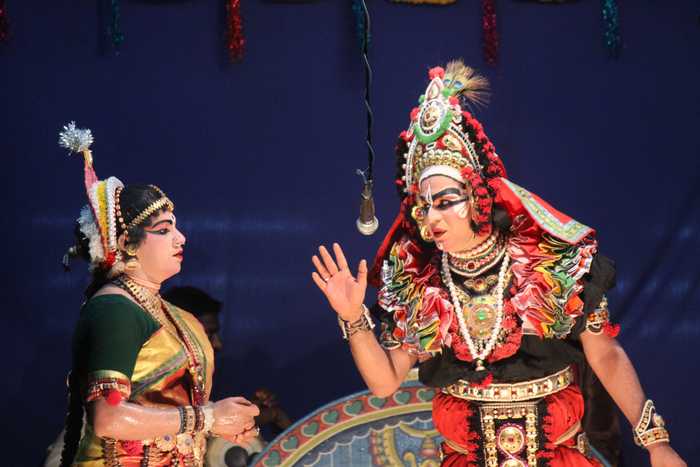Published 21:48 IST, December 13th 2023
How Navarasas illuminate the soul of Indian classical dance forms
The meaning of navras is nine emotions. And these emotions encapsulate all human feelings. Let us see what these 9 emotions are.
Advertisement
India has h a rich culture of performing arts. Our dances, wher it is Kathak, Bharatnatyam or Manipuri, have power to capture imagination and appeal to emotions of audience. One way our dances are able to do that is through Navarasas. What is it? Let us know more about how Navarasas make classical dance performances captivating.
What is Navarasa?
Advertisement
Navarasa, meaning "nine emotions" in Sanskrit, encapsulates entire range of human emotions and experiences. This concept is a cornerstone of tritional dance forms like Bharatanatyam, Kathak, Odissi, Kuchipudi, and more, providing dancers with a structured framework to convey a range of sentiments through ir performances.

nine rasas or emotions in Navarasa
Advertisement
Shringara (Love) - This emotion is embodiment of love and beauty. Dancers express romantic and loving sentiments, portraying various facets of love, from youthful infatuation to mature companionship and eternal love.
Hasya (Laughter) - Hasya revolves around emotion of joy and laughter. Performers use expressions, body movements, and sometimes humourous narratives to evoke laughter and mirth in audience.
Advertisement
Karuna (Sorrow) - Karuna encompasses deep emotions of empathy and sorrow. Dancers convey feelings of compassion, empathy, and lament, exploring poignant aspects of human experience.

Raudra (Anger) - Raudra represents fiery emotion of anger. Through dynamic movements, intense expressions, and powerful footwork, dancers portray spectrum of anger, from mild irritation to fierce rage. Tandava has extensive use of Raudra.
Advertisement
Veerya (Courage) - Veerya embodies courage and heroism. Dancers depict valiant characters, celebrating bravery, strength, and triumph of good over evil through energetic and assertive movements. Warriors and survivors are represented through veerya ras.
Bhayanaka (Fear) - Bhayanaka explores emotion of fear and suspense. Performers use subtle expressions, evocative postures, and nuanced movements to convey a sense of trepidation and anxiety.
Bibhatsa (Disgust) - Bibhatsa encompasses emotion of disgust. Classical dancers express revulsion and aversion through facial expressions and body language, portraying disdain or repulsion.
bhuta (Wonder) - bhuta captures emotion of wonder and amazement. Dancers convey a sense of awe, marveling at extraordinary or divine through expansive and captivating movements.
Shanta (Peace) - Shanta represents serene emotion of peace and tranquility. Dancers embody a sense of calmness, contentment, and spiritual bliss through graceful and meditative movements.
21:48 IST, December 13th 2023